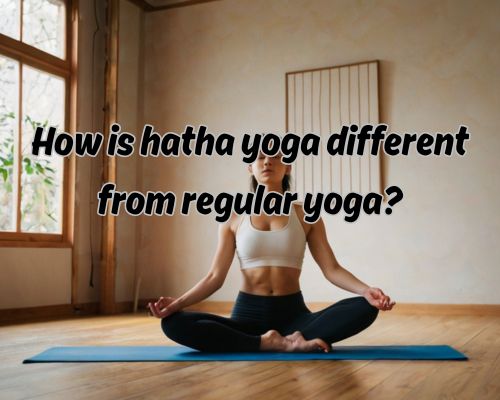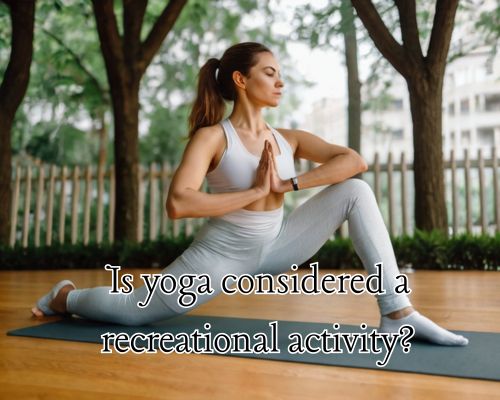Yoga, with its myriad styles and approaches, offers something for everyone, but distinguishing between these styles can sometimes be a challenge.
Among these, Hatha yoga often stands out for those exploring the world of yoga for the first time.
Hatha yoga is characterised by its slower pace and focus on breath and posture, making it distinct from other styles typically classified under “regular yoga”. This approach is particularly appealing to beginners or those seeking a more meditative practice.

Unlike more dynamic styles such as Vinyasa yoga, which is known for its fluid and fast-paced movements, Hatha yoga allows practitioners to linger in poses, ensuring proper alignment and deeper breathing.
This method promotes a balanced practice that is both physically accessible and mentally calming.
The gentle pace and the emphasis on balance and stillness make it a unique offering within the broader spectrum of yoga practices.
In a world that can often feel rushed, the slow and intentional movements of Hatha yoga provide a respite, sometimes considered an antidote to the more vigorous styles.
It invites practitioners to slow down, connect with their breath, and embrace a form of yoga that nurtures body and mind simultaneously.
By understanding these differences, individuals can better choose a yoga practice that aligns with their personal goals and lifestyle, see https://bikramyogamornington.com.au/ for more.
Understanding Hatha Yoga
Hatha Yoga combines physical postures, breathing techniques, and meditation to promote harmony and spiritual growth.
It emphasises a mindful practice, focusing on alignment and relaxation to improve strength, flexibility, and mental clarity.
Foundational Principles
Classical Hatha Yoga is grounded in the integration of body, mind, and spirit. This form of yoga is fundamentally about creating harmony within oneself by balancing physical effort and mental focus.
Breathing techniques, or pranayama, are essential, allowing practitioners to calm the mind and energise the body.
Attention to alignment in each asana ensures safety and effectiveness, creating a deeper mind-body connection. Through consistent practice, Hatha Yoga serves as a pathway to spiritual growth and mindfulness.
Core Characteristics
Hatha Yoga is characterised by its balanced approach to physical postures, or asanas, and controlled breathing.
Asanas are typically held for longer durations, allowing practitioners to explore depth and alignment in each pose. This slower pace aids in developing strength and flexibility whilst promoting relaxation and mental clarity.
The practice often includes a variety of poses designed to enhance overall health.
Emphasis on mindfulness encourages practitioners to be present with their bodies, aligning movements with breath and fostering a calming, meditative state.
Holistic Benefits
The benefits of Hatha Yoga extend to physical, mental, and emotional dimensions.
Physically, it boosts strength and improves flexibility, fostering better posture and alignment.
Breathing practices reduce stress and increase oxygen supply, supporting relaxation and mental clarity.
Practitioners, see https://bikramyogamornington.com.au/, often experience reduced stress and enhanced mental focus, contributing to their overall health and wellbeing.
As a holistic practice, Hatha Yoga nurtures a deeper awareness of the mind-body connection, helping individuals achieve greater harmony and balance in their lives.
Comparative Analysis of Yoga Styles
Yoga styles vary in intensity, focus, and objectives, making them suitable for different preferences and goals.
Understanding their distinctions can help practitioners choose a style that best fits their needs, whether it be enhancing core strength, improving flexibility, or reducing anxiety.
Hatha vs. Vinyasa Yoga
Hatha Yoga is known for its slow pace and emphasis on breathing, making it ideal for beginners or those recovering from injuries.
It focuses on holding poses for extended periods, enhancing balance and flexibility.
In contrast, Vinyasa Yoga, often referred to as Vinyasa Flow, integrates movement and breath in a seamless sequence.
It provides a cardio workout, improving energy levels and core strength. This style is more dynamic than Hatha, appealing to those seeking a vigorous session that also incorporates meditation elements.
Distinguishing Ashtanga and Iyengar Practices
Ashtanga Yoga follows a specific sequence of postures, performed with increasing intensity, which promotes purification through sweat.
It demands strength and discipline, often attracting experienced practitioners aiming to boost core strength and manage anxiety.
Iyengar Yoga is characterised by a strong emphasis on alignment and precision, using props to assist in achieving correct postures.
It is an excellent choice for individuals with injuries or those who want to deepen their understanding of yoga through meticulous attention to detail. Iyengar focuses on balance and energy levels, accommodating a broader range of abilities.
Other Yoga Variations and Practices
Beyond these styles, numerous other yoga variations cater to distinct preferences.
Yin Yoga, for instance, involves holding poses for several minutes. It targets deep connective tissues and is suitable for increasing flexibility and reducing stress and anxiety.
Practices like Yama emphasise ethical precepts and mental purification. Such styles highlight yoga’s diverse potential to foster physical and mental wellbeing.
Choosing the right style depends largely on individual goals. Some people want to enhance their overall fitness, others want to promote relaxation, and some want to achieve a balanced state of mind.

